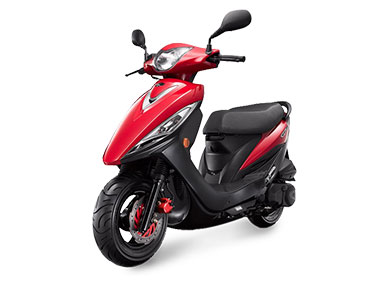In today’s fast-paced world, 花蓮租機車 have become an integral part of travel and daily commuting for many individuals. Whether you’re planning a vacation, a business trip, or simply need a temporary vehicle replacement, renting a car offers flexibility and convenience. However, navigating the myriad of options and understanding the fine print can be daunting. In this comprehensive guide, we’ll delve into everything you need to know about car rentals, from choosing the right vehicle to understanding insurance coverage and maximizing your rental experience.
Choosing the Right Vehicle: The first step in the car rental process is selecting the right vehicle for your needs. Consider factors such as the size of your party, the duration of your trip, and any specific features or amenities you require. If you’re traveling with family or a large group, opt for a spacious SUV or minivan to ensure everyone travels comfortably. For solo travelers or couples looking to explore urban areas, a compact car may be more economical and easier to maneuver through traffic and tight parking spaces.
Booking in Advance vs. Last-Minute Rentals: One of the key decisions when renting a car is whether to book in advance or opt for a last-minute rental. Booking in advance often allows you to secure lower rates and ensures availability, especially during peak travel seasons or in popular tourist destinations. However, last-minute rentals can sometimes yield unexpected deals, particularly if rental agencies have excess inventory they’re looking to offload. Keep in mind that availability may be limited, and you may have fewer options to choose from when booking at the last minute.
Understanding Rental Terms and Conditions: Before finalizing your reservation, it’s crucial to carefully review the rental terms and conditions. Pay close attention to details such as rental duration, mileage limits, fuel policies, and additional fees. Most rental agencies offer various insurance options, including collision damage waivers and liability coverage. While these add-ons can provide peace of mind, they often come with extra costs. Determine whether your existing auto insurance or credit card offers any coverage for rental vehicles to avoid duplicating coverage and unnecessary expenses.
Inspecting the Vehicle: Upon receiving the rental vehicle, take the time to thoroughly inspect it for any pre-existing damage or defects. Note any scratches, dents, or mechanical issues and ensure that they are documented on the rental agreement to avoid being held liable upon return. Familiarize yourself with the vehicle’s features and controls, including adjusting mirrors, headlights, and windshield wipers. If you encounter any issues or discrepancies, notify the rental agency immediately to avoid disputes later on.
Returning the Vehicle: When returning the rental vehicle, adhere to the agreed-upon drop-off time to avoid incurring additional fees for late returns. Be sure to return the vehicle with a full tank of gas to avoid costly refueling charges. Conduct a final inspection of the vehicle with a rental agency representative present and obtain a signed confirmation of the vehicle’s condition and mileage. Remember to remove all personal belongings and trash from the vehicle before returning it to ensure a smooth and hassle-free experience.
Conclusion: Renting a car can enhance your travel experience and provide unparalleled freedom and flexibility. By understanding the various aspects of the 花蓮租機車 rental process, from vehicle selection to insurance coverage and return procedures, you can make informed decisions and maximize the value of your rental experience. Whether you’re embarking on a cross-country road trip or simply need a temporary means of transportation, following these guidelines will help you navigate the ins and outs of car rentals with confidence and ease.




